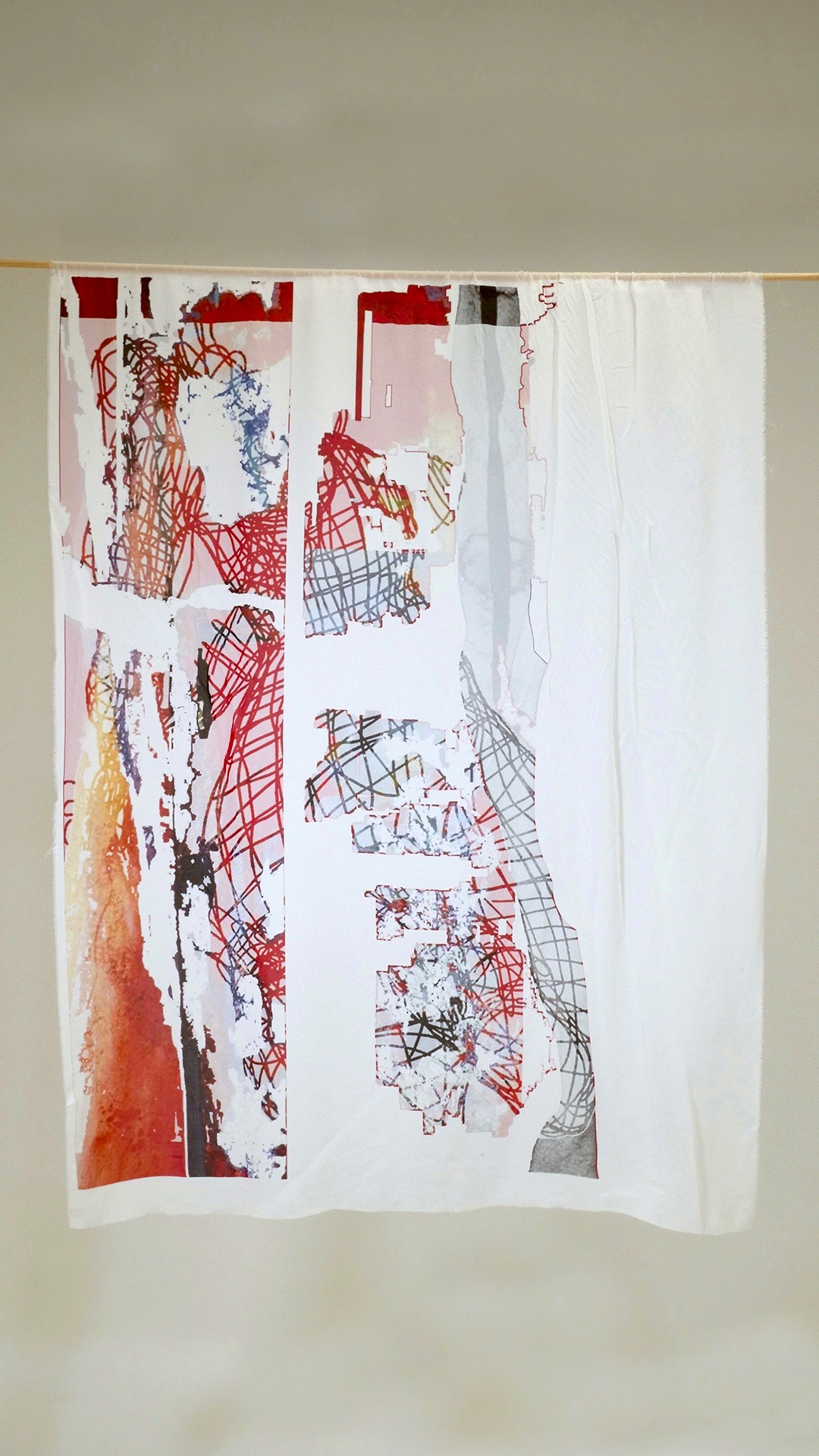
Ella McIntosh
BODY AND TIME
Digital Portfolio https://augustadesign-wolfgang-0852.squarespace.com/

To live, to live ... TO LIVE
BODY AND TIME is a conceptual compilation of textile designs inspired by the nature of life and the fleeting nature of existence. This idea of impermanence; the Japanese refer to it as the concept of Mono No Aware, 'the pathos of things' or 'a sensitivity towards ephemera', is conveyed through the use of colour and scale to create textured impressions that evoke the transitory nature of life and the human experience.
This collection of textile prints is not intended to be used for garment wear or for interiors, but rather as a collection of stand-alone visual designs displayed on fabric. Through the use of colour, scale, depth and the fabric itself, the objective is to draw attention to the underlying philosophical ideas they aim to convey.
The process of visualising thought to be able to better understand and communicate philosophical ideas is a core aspect of my practice. My creative process moves through a natural progression as guided by the conscious use of instinct, intellect and intuition. I look and listen to my response to a ‘problem’ and follow my instinct, questioning the intuition and developing a tangible visual realisation. I think it would be fair to say that I have a disillusioned perspective that is a reflection of the reality my generation has been presented with. This perspective is declared in the abstract visual language and anti-aesthetic notions conveyed in my work. I gravitate to the postmodernist idea of the anti-aesthetic as I am interested in “a cross-disciplinary practice that is sensitive to cultural forms engaged in the politic (eg feminist art) [...] and forms that deny the idea of a privileged aesthetic” (Foster, 1998, p. 13). With the Body and Time collection, I strove for a juxtaposition of aesthetics where my work rejected the obligation to be visually pleasing in order to be understood or appreciated. Its goal was not to express beauty but rather to nuance the reality of the transience of beauty. The final work was the result of a multi-methodological research process which engaged the use of a vast range of mediums, influences and cross-referencing which were then visually extended to process through technological forms using photoshop, digital print and laser cutting to create textural manifestations of my idea and response to a philosophical “problem”.
Over the past three years, I feel that my practice has developed into a means of inquiry into more abstract themes and ideas due to a growing resistance to the idea of “the existing role of design as a servant to industry” (Kincheloe, 2001, p. 5) in a consumerist society. It’s clear that both design and the designer are in part responsible for the creation and the perpetuation of some of the world’s major problems, including unsustainable over-consumption, planned technological obsolescence, social media addiction, and the proliferation of unnecessary and unwanted things (Yee & Bremner, 2011). This has encouraged me to question the nature of design as well as my role as a student of design and has resulted in a shift in my attention, to focus on the possibilities within the discipline, to be a communicator of ideas. Although this collection marks the completion of my undergraduate degree, it is only the beginning of my practice and the foundation of what is to come.
Foster, H. (1998). The Anti-aesthetic: Essays on postmodern culture. New York: New Press.
Kincheloe, J. L. (2001). Describing the bricolage: Conceptualising a new rigor in qualitative research. Qualitative Inquiry, 7(6), 679.
Yee, Joyce & Bremner, Craig. (2011). Methodological bricolage: What does it tell us about design? Retrieved from https://www.researchgate.net/publication/265592002_Methodological_bricolage_What_does_it_tell_us_ about_design



